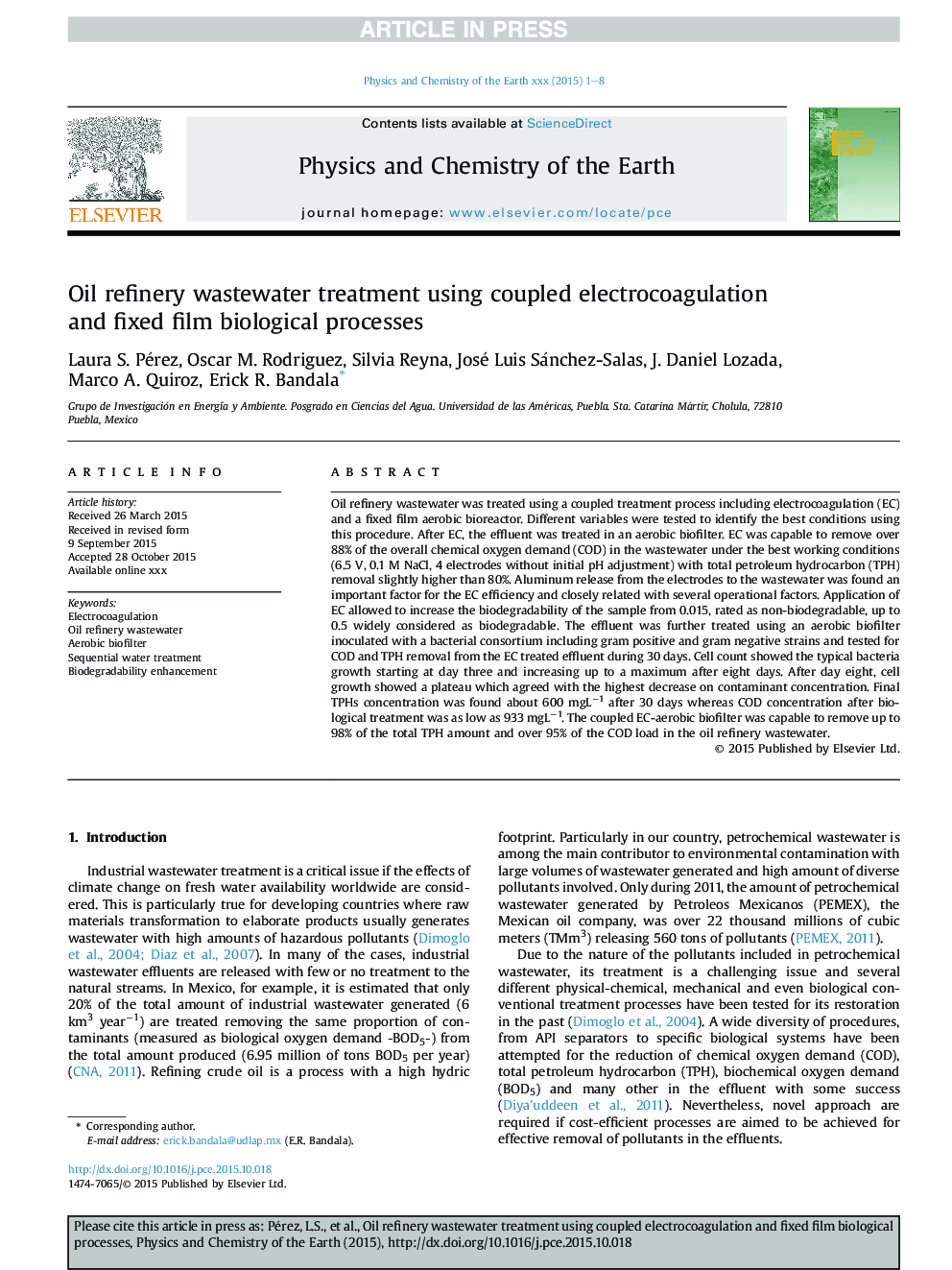| Article ID | Journal | Published Year | Pages | File Type |
|---|---|---|---|---|
| 6441927 | Physics and Chemistry of the Earth, Parts A/B/C | 2016 | 8 Pages |
Abstract
Oil refinery wastewater was treated using a coupled treatment process including electrocoagulation (EC) and a fixed film aerobic bioreactor. Different variables were tested to identify the best conditions using this procedure. After EC, the effluent was treated in an aerobic biofilter. EC was capable to remove over 88% of the overall chemical oxygen demand (COD) in the wastewater under the best working conditions (6.5Â V, 0.1Â M NaCl, 4 electrodes without initial pH adjustment) with total petroleum hydrocarbon (TPH) removal slightly higher than 80%. Aluminum release from the electrodes to the wastewater was found an important factor for the EC efficiency and closely related with several operational factors. Application of EC allowed to increase the biodegradability of the sample from 0.015, rated as non-biodegradable, up to 0.5 widely considered as biodegradable. The effluent was further treated using an aerobic biofilter inoculated with a bacterial consortium including gram positive and gram negative strains and tested for COD and TPH removal from the EC treated effluent during 30 days. Cell count showed the typical bacteria growth starting at day three and increasing up to a maximum after eight days. After day eight, cell growth showed a plateau which agreed with the highest decrease on contaminant concentration. Final TPHs concentration was found about 600Â mgLâ1 after 30 days whereas COD concentration after biological treatment was as low as 933Â mgLâ1. The coupled EC-aerobic biofilter was capable to remove up to 98% of the total TPH amount and over 95% of the COD load in the oil refinery wastewater.
Related Topics
Physical Sciences and Engineering
Earth and Planetary Sciences
Geochemistry and Petrology
Authors
Laura S. Pérez, Oscar M. Rodriguez, Silvia Reyna, José Luis Sánchez-Salas, J. Daniel Lozada, Marco A. Quiroz, Erick R. Bandala,
